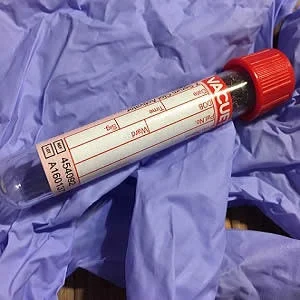On a daily basis, some 4,000 to 5,000 vials of blood are analysed at UAB Medicine's main laboratory. This may seem like a daunting task, but the lab's new automation system ensures the multistep process is done without difficulty. With this innovation, it's more like a hands-free operation once the specimens arrive in the laboratory.
Automation provides robotic functions as soon as the specimens arrive from the outpatient and inpatient environments. Lab techs work diligently to manage the volume of specimens received. The bar coded specimens are placed immediately on the pre-analytical inlet where the bar coded specimen is read, sorted, routed to where it is analysed, and, finally, stored. Tests not performed online go the outlet for pickup, including reference tests, immunology, and flow cytometry specimens. In short, the automation system performs the majority of the work.
"The automation line supports the vision of quality. The specimen tubes are resulted in a steady state fashion, improving the consistency of turnaround time testing, with minimal interruptions," says Sherry R. Polhill, Associate Vice President at UAB Medicine Birmingham, AL.
In addition, when clinicians order additional test(s), there's no need to collect another tube of blood: automation mechanisms sequester the original tube from the storage area and rerun the specimen through the designated analyser.
Expecting that automation would reduce labour has allowed the exploration of new industry opportunities. One of the new businesses created included the Lab Medicine Customer Service area, which now manages all incoming calls that used to go to the automation area. The Customer Service staff focus only on the customer’s needs, managing the requirements effectively and without having to transfer calls multiple times. The new process frees up the limited technologists that remain in the automation area while providing a quality experience to the customer on the other end of the call.
Another industry receiving additional labour was the Diagnostic Molecular Lab department. The Diagnostic Molecular Lab is the fastest growing industry in laboratory science. "Being able to add already trained labour to this environment was beneficial," Polhill points out.
A third opportunity receiving labour was to develop a new lab, the Drug Confirmation testing laboratory. The vision includes insourcing the testing, optimising expenses and healthcare revenue, and adding value for our multiple customers and services within the healthcare system, according to Polhill.
"The UAB Medicine’s automation line, 32 different laboratory sites, including nine offsite satellite labs, four hospital locations, with approximately 400 laboratory employees and the Department of Pathology keep the whole process of blood analyses running smoothly," Polhill says. "Innovation keeps us progressive and we enjoy managing the needs of patients, customers and providers to the best of our abilities."
Source: HealthManagement.org
Image Credit: Pixabay
Latest Articles
Innovation, Lab automisation, hands-free operation
On a daily basis, some 4,000 to 5,000 vials of blood are analysed at UAB Medicine's main laboratory. This may seem like a daunting task, but the lab's new automation system ensures the multistep process is done without difficulty. With this innovation, it


![Tuberculosis Diagnostics: The Promise of [18F]FDT PET Imaging Tuberculosis Diagnostics: The Promise of [18F]FDT PET Imaging](https://res.cloudinary.com/healthmanagement-org/image/upload/c_thumb,f_auto,fl_lossy,h_184,q_90,w_500/v1721132076/cw/00127782_cw_image_wi_88cc5f34b1423cec414436d2748b40ce.webp)





